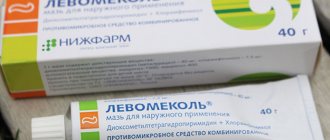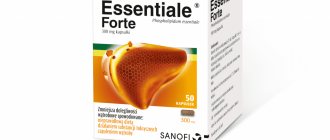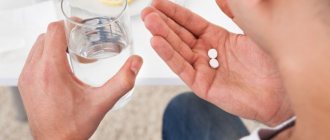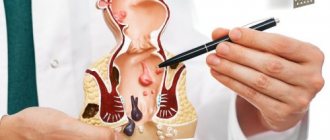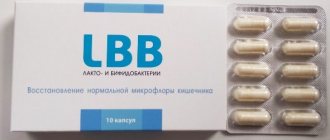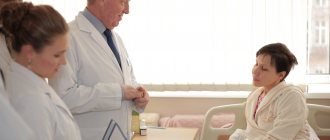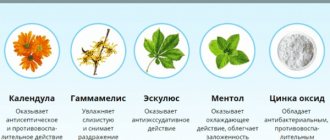From this article you will learn:
- What does Solcoseryl ointment help with?
- indications and regimens for use,
- application in cosmetology against wrinkles.
The article was written by a specialist with higher medical education.
Solcoseryl ointment is a preparation containing deproteinized dialysate from the blood of calves, which is an effective stimulator of healing of skin lesions and the red border of the lips. Here you need to pay attention to the fact that the drug is intended for application only to those wounds that do not have wet discharge. If the wound surface is wet or has discharge, in this case only Solcoseryl in gel form should be used.
The drug is registered as a “medicine” and is intended exclusively for external use. The drug is produced by pharma (Switzerland) and has no age restrictions, and is also not contraindicated for use in lactating and pregnant women. The latter indicates a high safety profile and a low risk of developing allergies. The ointment is a homogeneous white fatty mass, which has a characteristic smell of petroleum jelly and meat broth (the latter is associated with production technology).
Solcoseryl ointment: photo of the drug
Deproteinized dialysate from calf blood - indications for use
The list of indications for the use of Solcoseryl ointment is determined by the presence in the drug of a large number of various growth factors and active components that stimulate the process of regeneration of damaged tissues. The drug is indicated for therapy in the following cases:
- abrasions, scratches and cuts to the skin,
- sun or thermal burn of the skin (1-2 degrees),
- frostbite,
- the presence of trophic ulcers and bedsores,
- dry, crusty wounds on the skin and red border of the lips.
Reviews from patients and doctors about Solcoseryl ointment are quite positive, and they say that the drug accelerates wound healing by about 25-30%. It should be noted that some patients try to use Solcoseryl as an ointment for wrinkles (for cosmetic purposes). There is a certain logic in this, because... the active substances of the drug actually promote the proliferation of fibroblasts and enhance their activity. We will discuss this aspect of application in more detail in the “Reviews” section.
Important: once again we draw your attention to the fact that the instructions for use for Solcoseryl ointment contain clear instructions that the drug can be used to heal wounds on the skin - only if the surface of the wound is dry and there is no wet discharge (exudate, ichor). To accelerate the healing of fresh wounds that are not yet covered with granulations/crusts, as well as those with wet discharge, Solcoseryl is used in gel form.
We also draw your attention to the fact that despite the fact that all forms of Solcoseryl (ointment, gel and dental paste) - although they have a similar list of active ingredients, the ointment form of this drug should not be used on the oral mucosa. This is due to the fact that the fatty substance of the ointment does not adhere well to the moist mucous membrane and is instantly swallowed. To speed up the healing of the oral mucosa, it is better to use Solcoseryl dental paste.
Interaction
Solcoseryl injections should not be mixed when administered with other medications, especially with phytoextracts.
The pharmaceutical incompatibility of Solcoseryl in the form of an injection solution with parenteral forms has been established:
Ginkgo biloba extract,
naftidrofuryl,
bencyclane fumarate.
As solutions for diluting Solcoseryl injection, only isotonic sodium chloride solution and 5% glucose solution should be used.
The interaction of Solcoseryl with other topical medications has not been established.
Solcoseryl ointment – price in the pharmacy, composition analysis
You will not like the cost of this drug. If 1-2 years ago it could be bought for 500-700 rubles, now the price for Solcoseryl ointment in a pharmacy will be from 2600 to 3000 rubles. This cost is indicated for 2022 (and the drug is not available in many pharmacies), but below we will also talk about cheaper indirect analogues of this drug. Solcoseryl in the form of an ointment is available in aluminum tubes of 20 g and is sold in pharmacies without a prescription.
Solcoseryl ointment: composition
| Active substances (in 1 g of ointment) – → deproteinized dialysate from the blood of healthy dairy calves (in terms of dry matter). | 2.07 mg |
| Excipients - cholesterol, cetyl alcohol, white petrolatum, distilled water, as well as preservatives - methyl parahydroxybenzoate (E 218) and propyl parahydroxybenzoate (E 216). |
Composition analysis - the main and only active component of this drug is a deproteinized dialysate from the blood of dairy calves. This substance is very rich in low molecular weight organic compounds - amino acids, glycolipids, as well as oligopeptides and nucleosides. All these components, acting on damaged tissues, accelerate the healing processes in them. Studies have shown that the rate of regeneration when using this drug increases by approximately 30%.
Due to the large amount of organic components in the composition, the use of preservatives is also required. These are E 218 and E 216 (methyl parahydroxybenzoate and propyl parahydroxybenzoate), which can be classified as parabens. You need to pay attention to this point if you have allergic reactions to cosmetics or oral hygiene products, or if you have increased allergies in general.
Solcoseryl: analogues
It is impossible to find analogues for Solcoseryl ointment in Russian pharmacies, because the only drug with a similar composition, Actovegin ointment, is no longer imported into Russia. But there are several drugs with a completely different composition that can also speed up the healing of skin damage. We are talking about scratches, abrasions, cracks, cuts, wounds, minor burns, bedsores, etc. If there are wounds, a doctor should prescribe such drugs (after examining the wound and determining the risk of infection).
Among drugs for external use that accelerate wound healing (drugs from the “regeneration stimulants” group), we can recommend the following drugs:
- OLAZOL – the drug is made on the basis of chloramphenicol, sea buckthorn oil and benzocaine (anesthetic), and it is produced in a convenient aerosol form. It not only accelerates wound healing, but also has an antimicrobial and analgesic effect (hence Olazol is also suitable for wet, infected wounds). In turn, Solcoseryl ointment does not have an antimicrobial effect, and therefore it can only be applied to clean, dry wounds. The cost of the drug is only about 220 rubles.
- BEPANTEN –This line of drugs contains 5% dexpanthenol - a precursor of vitamin B5, which stimulates skin regeneration. If you have an uninfected dry wound under a crust (without a wet discharge), then any of the following forms of the drug will suit you - Bepanten cream or Bepanten plus cream. These drugs are usually applied 2 times a day - rub in with gentle massaging movements.
But if we are talking about wet wounds, which always have a risk of infection, only Bepanten Plus cream is suitable for you (the same version of the drug is preferable for cuts, scratches and abrasions). The cream contains dexpanthenol + antiseptic chlorhexidine 0.5%, which provides a pronounced antimicrobial effect. On wet wounds, the drug is applied on turundas under a bandage - 2 or more times a day, but shallow cuts and scratches can be treated openly. The cost of the Bepanten line of drugs ranges from 400 to 470 rubles per 30 g tube (there are also tubes of 50 and 100 g).
- METHYLURACIL ointment - this drug is also capable of slightly accelerating the regeneration processes of wounds on the skin, but much weaker in comparison with Solcoseryl ointment.
The only advantage of the drug is its very low price (a 25 g tube costs only 50 to 100 rubles). For dry, uninfected wounds, apply and rub in the product using gentle movements. If we are talking about moist, uninfected wounds, then the drug is applied on the wounds under a bandage. The frequency of changing dressings will depend on the depth/area of the wound surface, the amount of wet discharge from the wound, etc. Methyluracil ointment does not have an antiseptic effect and therefore there is a risk of suppuration of wet wounds when using it (to reduce the risk of suppuration, it is necessary to pre-treat the wound with antiseptics).
Composition and release form
| Injection | 1 ml |
| deproteinized dialysate from the blood of healthy dairy calves, standardized chemically and biologically (in terms of dry matter) | 42.5 mg |
| excipients: water for injection - up to 1 ml |
in ampoules of 2 ml; there are 25 ampoules in a box; or in ampoules of 5 and 10 ml; There are 5 ampoules in a box.
| Gel | 1 g |
| deproteinized dialysate from the blood of healthy dairy calves, standardized chemically and biologically (in terms of dry matter) | 4.15 mg |
| preservatives: methyl parahydroxybenzoate (E218) and propyl parahydroxybenzoate (E216) | |
| excipients: calcium lactate; sodium carboxymethylcellulose; propylene glycol; water for injections |
in tubes of 20 g; 1 tube in a box.
| Ointment | 1 g |
| deproteinized dialysate from the blood of healthy dairy calves, standardized chemically and biologically (in terms of dry matter) | 2.07 mg |
| preservatives: methyl parahydroxybenzoate (E218) and propyl parahydroxybenzoate (E216) | |
| excipients: cetyl alcohol; cholesterol; white Vaseline; water for injections |
in tubes of 20 g; 1 tube in a box.
Solcoseryl ointment: instructions and application diagram
Pharmacological action of the drug - as we said above: the active substance of the ointment is deproteinized (devoid of protein) hemodialysate, which contains a spectrum of low-molecular components of cell mass and blood serum of dairy calves. Clinical studies have shown that thanks to this composition, Solcoseryl ointment has a wound-healing, regenerating, antihypoxic, membrane-stabilizing, angioprotective, and cytoprotective effect on damaged tissues.
In simple terms, this means that the drug has the following properties -
- accelerates wound healing (by about 30%),
- stimulates the proliferation of fibroblasts responsible for collagen synthesis,
- stimulates collagen synthesis in young growing tissues,
- activates metabolic processes in cells (increases oxygen consumption by cells, stimulates the transport of glucose into cells), which together allows damaged cells of the body to regenerate and recover faster.
Solcoseryl ointment: official instructions for use (download in PDF)
Scheme and features of application –
Solcoseryl ointment should be applied in a thin layer directly to the wound surface 2-3 times a day. Before applying the ointment to the wound, it is necessary to treat it with an antiseptic solution using a clean gauze swab moistened with an antiseptic solution. After this, you need to wait until the wound dries and apply ointment. As antiseptics, you can use 3% hydrogen peroxide or antiseptic solutions -
- Chlorhexidine solution,
- Miramistin solution.
Important : remember that you should not apply the ointment to infected wounds, as well as fresh wounds with wet discharge! For wet wounds, Solcoseryl gel can be used, and after the wound dries and becomes covered with granulations or crusts, you can already switch to the ointment form of Solcoseryl. The latter, in addition, contains fatty components that will form a protective film on the wound surface (24stoma.ru).
After applying the ointment (if necessary), the wound can be covered with a gauze bandage. The use of the ointment should continue until its complete epithelization. If the healing of the wound has occurred with the formation of scar tissue, then in order to reduce the scar and make it more elastic, it makes sense to immediately start using a special cream for scars and scars.
Pharmacological action of the ointment
The pharmacological properties of the drug have not been fully studied. However, during the studies it was proven that solcoseryl has the following properties:
- in case of oxygen deficiency, its delivery to damaged cells is ensured;
- glucose transfer in metabolic disorders;
- is a catalyst for the formation of intracellular ATP;
- ensures the storage of energy in mitochondria generated during the transformation of nutrients;
- supports cells during nutritional deficiencies by supplying high-energy phosphates;
- prevents or prevents atypical changes with minor cell damage;
- “launches” the process of natural restoration of cells and tissues;
- activates the proliferation (division and formation) of fibroblasts that form the framework of connective fibers, and the formation of collagen filaments in the walls of blood vessels.
The ointment is widely used in cosmetology, gynecology, ophthalmology, and dentistry.
Main indications for use of the product
Ointment with solcoseryl is recommended for:
- minor skin damage in the form of abrasions;
- burns (except chemical) 1-2nd degree, which occur without the formation of exudate;
- frostbite of the 1st-2nd degree in the absence of wound weeping;
- psoriasis;
- to eliminate dry calluses and corns;
- to prevent the formation of scars after laser removal of warts or moles;
- atopic and seborrheic dermatitis;
- “sticking” in the corners of the mouth;
- drying of the nasal mucosa;
- in the treatment of wounds that heal poorly, including trophic ulcers and bedsores, after removal of dead tissue.
As a rule, a gel with solcoseryl is first applied to treat the wound surface with the separation of exudate. After the first signs of wound granulation appear, therapy is continued with the drug in the form of an ointment.
Differences between the ointment form of solcoseryl and the gel form
Pharmacies offer 2 forms of the drug intended for external local use. How do they differ and is it necessary to pay attention to such nuances?
The main differences between the forms are due to the excipients. Thus, solcoseryl gel does not contain fatty bases, which is why it is quickly washed off with warm water and removed from the surface of the skin. Due to this, it is the gel form that stimulates the formation of granulation tissue and the elimination of wound exudate.
When the wound dries out and signs of granulation appear, it would be more appropriate to use ointment. The fatty base of the drug forms a protective film on the surface of the wound, so the healing process is noticeably faster. In addition, solcoseryl ointment softens the surface of the wound, thereby avoiding the appearance of scars and other skin defects.
Solcoseryl ointment: reviews
Reviews of Solcoseryl ointment show that it really helps speed up wound healing. This is especially important for older patients, metabolic disorders and other conditions where the normal rate of healing of injured tissue may be reduced. The fatty components included in the ointment do not allow it to dry out quickly, and therefore the active components of the ointment act for a long time. Also, the fatty film also has a protective effect.
The main guarantee of good reviews is not to apply the ointment to wet and/or infected wounds, and to always antiseptically treat the wound before applying it. For wet wounds (as we said above), only Solcoseryl in the form of a gel is suitable.
Solcoseryl injections: what for
Any surgical intervention is accompanied by a violation of the integrity of the skin and tissues. If the operation involves the removal of some fragment of an internal organ, the body will require a long rehabilitation period, during which the body will be fully or partially restored. Solcoseryl in ampoules can be instantly delivered to tissues, shortening the recovery period. Injections allow you to mobilize all the internal forces of the body to heal wounds, cuts and sutures not only on the outside, but on the internal organs that remain after operations.
Special cases include the prescription of intravenous or intramuscular administration to patients after ophthalmological operations. Solcoseryl ensures active blood circulation, which accelerates the process of adaptation of the organ of vision in the postoperative period, and also reduces the risk of complications.
Solcoseryl anti-wrinkle ointment: reviews
Sometimes patients use Solcoseryl facial ointment for cosmetic purposes to get rid of wrinkles.
The logic here is clear - since the drug increases the proliferation and activity of fibroblasts and leads to an increase in collagen production in damaged skin tissues (in wounds), then its regular use should probably lead to an increase in collagen production in healthy, undamaged skin. However, when using Solcoseryl ointment for wrinkles, reviews from cosmetologists indicate the absence of an anti-aging effect. The fact is that the drug affects the production of collagen and the proliferation of fibroblasts exclusively where the skin tissue has been damaged. As soon as the process of tissue restoration ends (and the young granulation tissue that has arisen at the site of damage turns into mature connective tissue), the effect of the drug stops.
However, long-term use of Solcoseryl ointment for the face (given the content of a fatty substance in it) can moisturize the skin, making it a little more elastic. But this does not occur due to an increase in collagen content, but due to a fatty film on the surface of the skin, which prevents the evaporation of moisture and therefore makes the skin a little more hydrated. At the same time, in patients with acne, the ointment can also cause an exacerbation of acne and pimples (due to the Vaseline content).
To stimulate collagen production in aging skin, the following 2 types of products are most effective (for arguments and clinical studies, see the links below) –
- products with retinoids,
- fractional lasers.
Recommendation: if you are looking for a cream both to improve skin regeneration and to significantly increase its hydration, a good option would be the “Bepanthen for dry skin” cream. It contains 5% dexpanthenol (a precursor to vitamin B5, which enhances regeneration), as well as well-moisturizing components such as the emollient “lanolin” + “D, L-pantolactone”. Apply 2 times a day, including on the moving parts of the eyelids. After a single application, moisture remains throughout the day. The cost is only 950 rubles per 100 ml tube.
Reviews about the drug
Irina: “I always have Solcoseryl in my medicine cabinet. Burns, cuts, abrasions - I treat everything with it, and it helps well, I have never left a scar with its help. A year ago I developed hemorrhoids. I immediately started looking for different recipes, read about different drugs, and even turned to traditional medicine. So, the same Solcoseryl cured me. I had ointment available at home, so I used that. I applied a small amount twice a day, and the disease went away in 2 weeks. True, I didn’t have any complications yet, the nodes were just a little enlarged and hurt.”
Elena: “A year ago I had surgery to remove hemorrhoids. It’s not very pleasant, but I delayed the treatment myself, I don’t argue. The doctor prescribed Solcoseryl gel to me so that the mucous membrane would heal faster and there would be no traces left. In addition to this, I used other means to relieve inflammation. I can say that I recovered quickly, there were practically no scars left, and hemorrhoids no longer bother me. I don’t want to end up on the surgeon’s table anymore, so I follow all the doctors’ recommendations.”
Anatoly: “I didn’t want to go to the doctors with such a problem, but in the end I had to. When hemorrhoids appeared, I listened to enough advice and began to be treated with traditional methods. I felt better for a short time, but the illness did not go away. When the nodes began to increase and blood began to be released frequently, I went to the proctologist. I managed to recover without surgery, but I had to buy several medications at once. Solcoseryl was also on this list, it was supposed to help quickly recover. In general, my hemorrhoids went away completely within a month, and I still keep the list with the doctor’s instructions just in case.”
Solcoseryl is a drug that is used, among other things, to treat hemorrhoids. Its main goal is to speed up regeneration processes and stop cell destruction. It contains a biologically active substance that can participate in metabolic processes at the cellular level and heal wounds. As metabolism is restored and the supply of oxygen to the cells is normalized, the remaining symptoms of hemorrhoids - itching, pain, inflammation - disappear. Reviews about the drug prove its effectiveness at different stages of the disease.
Contraindications and side effects –
The only contraindication for use is the presence of hypersensitivity to any of the components of the drug. The ointment has no contraindications depending on age, as well as contraindications for use during pregnancy and lactation.
However, if you are predisposed to allergic reactions (especially to cosmetics or oral hygiene products), you should use this drug with caution. An allergic reaction to Solcoseryl ointment usually develops as urticaria or dermatitis. If an allergy occurs, you should stop using the drug. Please note that when applying the ointment, a short-term burning sensation may appear (this is absolutely normal), but if the burning does not go away, then the ointment should be washed off and further use of the drug should be discontinued.
Special instructions -
- Solcoseryl ointment should not be applied to contaminated, infected wounds, because the drug does not contain antimicrobial components. Also, the ointment is not suitable for treating wounds with wet discharge (here you need a form of Solcoseryl in the form of a gel).
- If you experience pain, swelling, redness, a fistula with discharge near the site where the ointment was applied, or an increase in body temperature, you should immediately consult your doctor, because these are the first symptoms of purulent inflammation.
- If, while using the drug, your wound does not heal (about 2 weeks), you should immediately consult a doctor, because this may indicate the presence of a benign or malignant tumor. We hope that our article on the topic: What is Solcoseryl ointment used for, treatment regimens - turned out to be useful to you!
Sources:
1. Higher medical education of the author of the article, 2. Additional professional education in the field of cosmetology, 3. Personal experience as a maxillofacial surgeon, 4. https://solcolife.ru/.
Side effects
Solcoseryl solution for injection.
In rare cases, allergic reactions may develop (urticaria, hyperemia and swelling at the injection site, increased body temperature). In this case, it is necessary to stop using the drug and prescribe symptomatic treatment.
Solcoseryl gel, ointment.
In rare cases, allergic reactions in the form of urticaria and marginal dermatitis may develop at the site of application of Solcoseryl. In this case, you must stop using the drug and consult a doctor.
A short-term burning sensation may be observed at the site of application of Solcoseryl gel. If the burning sensation does not go away for a long time, the use of Solcoseryl gel should be abandoned.
